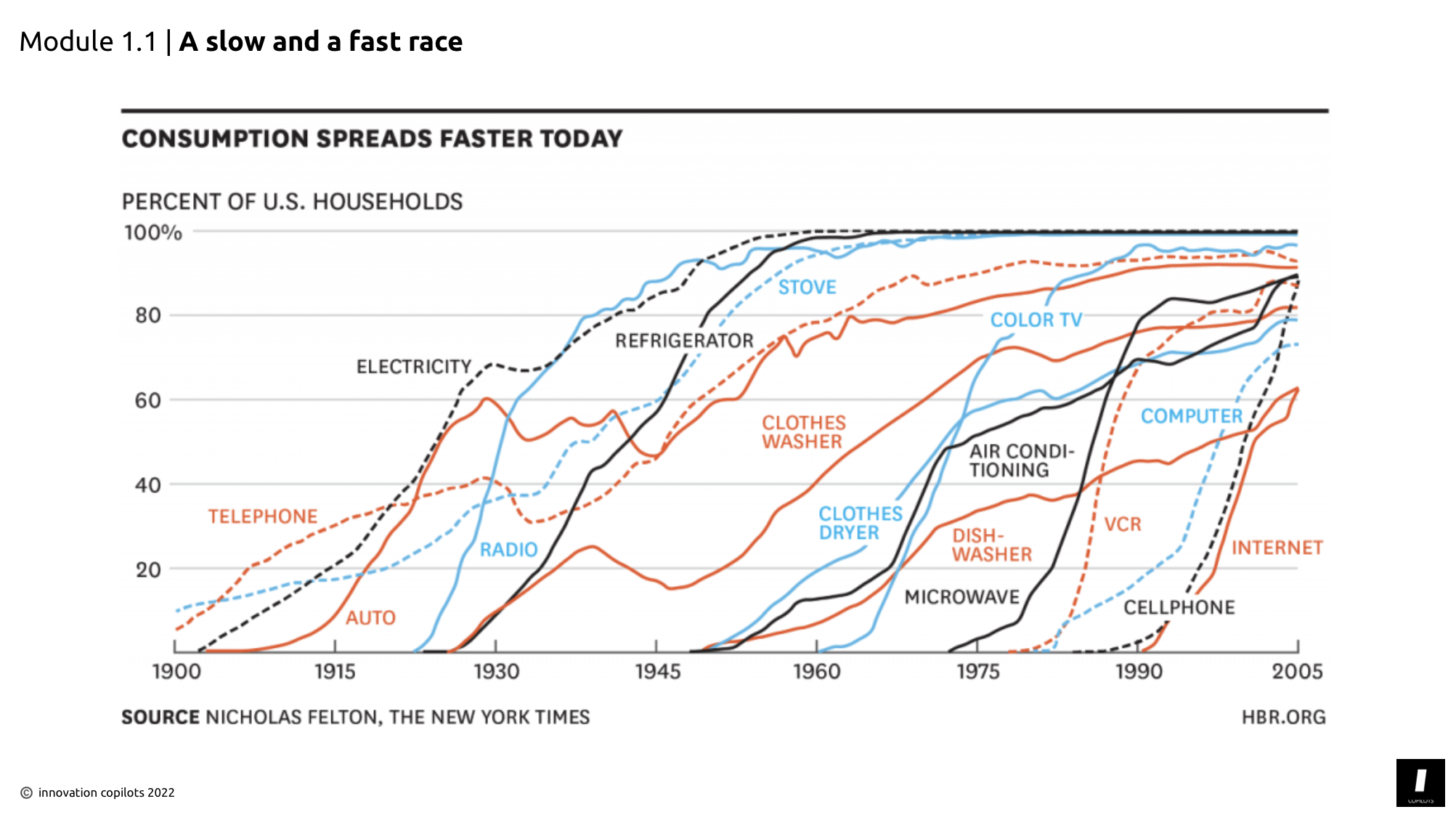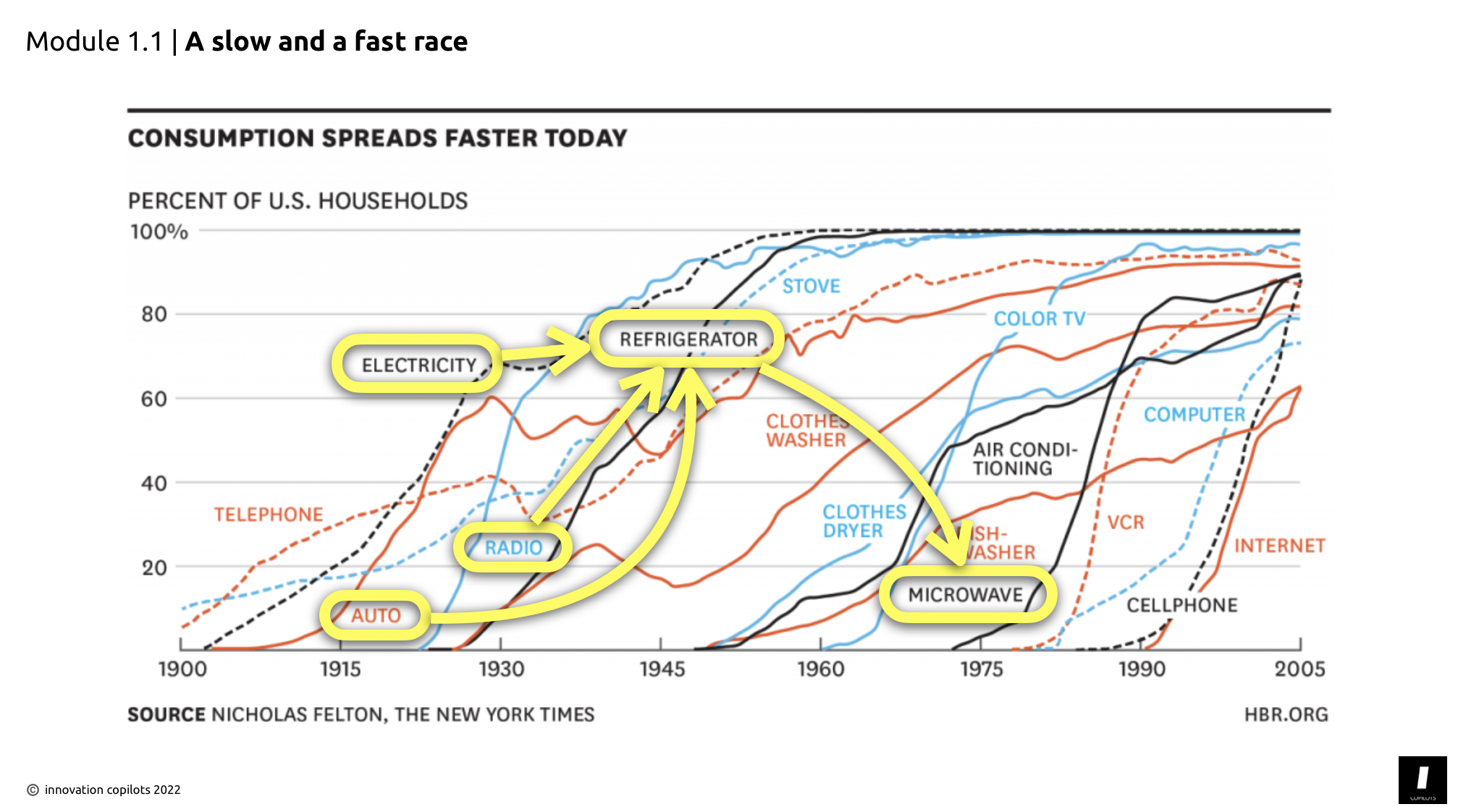The acceleration fallacy

These last few days, there have been several comparisons about how fast ChatGDP reached 1 million users, and you probably caught a few of those.
ChatGPT has crossed 1M+ users in just 5 days.
— Aleksandr Volodarsky 🇺🇦 (@volodarik) December 8, 2022
To compare, it took Netflix 41 months, FB - 10 months, and Instagram - 2.5 months.
But many haven’t yet realized its full potential.
Here are the 10 mindblowing things you can do using it right now:
It's a usual trope around technology and how it gets more and more momentum and easier market penetration as time goes on. One of the most know charts is this sort of comparison, starting with the first landlines to the internet:

We are very often trained at seeing and thinking about « products » to benchmark how fast we need to be in the market when to launch or reinvent our business. It’s a very common mistake.
The thing is that the market doesn’t work in vertical product lines conveniently fitting with your company’s roadmap. The market is a global and turbulent system. Some parts are slow-moving, and some parts are faster. Think of it as a weather system with small and big convection cells, with fast and slow zones interconnected and influencing one another.
After the industrial revolution, the speed at which refrigerators penetrated the market depended on radio ads to promote this new consumer technology, a pervasive electricity grid running in the suburbs, a network of supermarkets pushing for the need to store a whole week of food, and most importantly, a car to get to the supermarket.

Viewing the speed at which different technologies are adopted as competing together and accelerating in time is a fallacy. Or we should pile up all these asymptotic lines together, not as competing but as cumulative effects.
Back to ChatGDP, its spectacular adoption rate is the testimony of a fantastic web application launched in 2022, not in 2007, and benefiting from the cumulative effect of the massive adoption of mobile phones, broadband internet, 5G, and a few billion people navigating different social media. All these conditions are what fuel ChatGDP.




